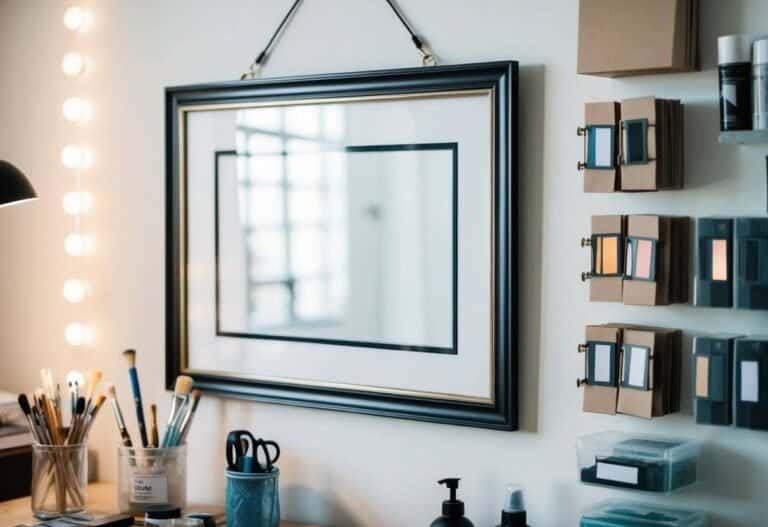Eco-Friendly Framing: Sustainable Materials and Practices for Your Next Project
In recent years, there has been a significant shift toward sustainability in home decor. The framing industry is no exception, with eco-friendly framing options becoming increasingly available and popular. Whether you’re preserving family photos, showcasing artwork, or displaying cherished memorabilia, choosing sustainable framing materials and practices can help reduce your environmental footprint without compromising quality or aesthetics.
Why Choose Sustainable Framing?
The traditional framing industry has historically relied on materials that can be harmful to the environment. Standard frames often use woods from non-sustainable forests, while many mats and backing boards contain acids that degrade artwork over time. Additionally, conventional glass and plastic glazing options are energy-intensive to produce and difficult to recycle.
By selecting eco-friendly framing alternatives, you can:
- Reduce deforestation and habitat destruction
- Decrease waste in landfills
- Lower carbon emissions associated with production and shipping
- Prevent harmful chemicals from entering the environment
- Better preserve your artwork for future generations
Sustainable Frame Materials
Reclaimed and FSC-Certified Wood
One of the simplest ways to make environmentally conscious framing choices is to select frames made from sustainable wood sources.
Reclaimed wood frames offer unique character while giving new life to materials that might otherwise go to waste. These frames are crafted from wood salvaged from old barns, factories, furniture, and other structures. Each piece carries its own history, with distinctive markings, color variations, and grain patterns that add character to your framed pieces.
FSC-certified wood comes from forests managed according to Forest Stewardship Council standards, ensuring responsible harvesting practices. These forests are managed to protect biodiversity, indigenous peoples’ rights, and worker safety while maintaining long-term viability.
Explore our reclaimed wood collection to find one-of-a-kind frames with stories to tell.
Bamboo Frames
Bamboo has gained popularity as a sustainable framing material due to its remarkable growth rate and minimal environmental impact. Unlike traditional hardwoods that can take decades to mature, bamboo reaches harvest maturity in just 3-5 years. It requires no pesticides or fertilizers to thrive and absorbs more carbon dioxide than equivalent stands of trees.
Bamboo frames offer a clean, contemporary aesthetic with distinctive grain patterns. They’re available in natural tones or can be finished in various colors to complement your decor and artwork.
Recycled Metal Frames
Aluminum and steel frames made from recycled metals provide another eco-friendly option. The production of recycled aluminum uses approximately 95% less energy than virgin aluminum production, significantly reducing carbon emissions.
These frames tend to have a sleek, modern appearance and are extremely durable. They’re ideal for contemporary spaces and can be manufactured in various profiles and finishes to suit different decorative styles.
Eco-Friendly Matting and Backing
Acid-Free and Conservation Materials
Traditional matting and backing boards often contain lignin and acids that can damage artwork over time, causing discoloration and deterioration. Conservation-quality, acid-free materials not only protect your artwork but are also typically manufactured with more environmentally friendly processes.
Cotton rag mats made from 100% cotton fibers provide excellent conservation properties while using renewable resources. These mats are naturally acid-free and lignin-free, making them ideal for valuable or sentimental pieces that you want to preserve for generations.
Recycled paper mats offer another sustainable alternative. Many manufacturers now produce high-quality matboard using post-consumer waste paper, combining environmental benefits with conservation-grade performance.
Biodegradable Backing Boards
Several companies now produce backing boards made from sustainable materials that will biodegrade at the end of their lifecycle. These can include:
- Boards made from agricultural waste fibers like sugar cane or wheat straw
- Hemp-based backing boards
- Compressed bamboo backing
These alternatives provide rigid support for your framed pieces while reducing the environmental impact compared to traditional foam core or plastic-based backing materials.
Sustainable Glazing Options
Museum Glass and Conservation Glass
While standard glass is recyclable, its production is energy-intensive. However, investing in high-quality museum or conservation glass can be more sustainable in the long run, as it better protects artwork, potentially reducing the need for reframing due to UV damage.
These specialty glasses filter out harmful ultraviolet light that causes fading and deterioration of artwork. Although they require more resources initially, their protective qualities mean your framed pieces will last longer, reducing waste over time.
Acrylic Alternatives
For situations where glass poses safety concerns or weight issues, there are more sustainable acrylic alternatives to consider:
Plant-based acrylics are partially made from renewable resources like corn or sugar cane, reducing dependence on petroleum-based plastics.
Recycled acrylics reuse existing plastic materials, keeping them out of landfills while providing excellent clarity and impact resistance.
When selecting acrylic options, look for those with UV-filtering properties to protect your artwork from sun damage.
Sustainable Framing Practices
Local Framing Services
One often overlooked aspect of sustainable framing is the carbon footprint associated with shipping and transportation. Choosing local framing services reduces these emissions while supporting your community’s economy.
Local framers can also provide valuable advice on regionally appropriate sustainable materials and may have connections with local artisans who create unique eco-friendly frames.
Digital Previews
Many professional framers now offer digital preview services, allowing you to visualize different framing options without having to produce physical samples. This practice reduces waste from sample corners and mat snippets that would otherwise end up discarded.
Reuse and Upcycle
Consider giving new life to existing frames through refinishing or repainting. Many older frames are made from solid wood of higher quality than what’s commonly available today. With some cleaning and minor repairs, these frames can be transformed to suit contemporary aesthetics while keeping perfectly good materials out of landfills.
For DIY enthusiasts, many thrift stores and estate sales offer high-quality frames at bargain prices, ready for upcycling into unique, personalized framing solutions.
Beyond the Frame: Sustainable Display Practices
Energy-Efficient Lighting
How you display your framed pieces also impacts their environmental footprint. Consider using LED lighting for illuminating artwork, as these fixtures use significantly less energy than traditional halogen or incandescent options. LEDs also produce less heat and emit minimal UV radiation, helping preserve your artwork.
Strategic Placement
Position framed artwork away from direct sunlight, heat sources, and areas of high humidity. This thoughtful placement not only protects your pieces but can also reduce the need for climate control in your space, saving energy.
Finding Sustainable Framing Suppliers
Many framing businesses like Mirror and Frame now specialize in eco-friendly options. When searching for sustainable framing services, look for certifications or explicit policies regarding:
- FSC or similar sustainable forestry certifications
- Use of recycled or reclaimed materials
- Local sourcing practices
- Energy-efficient manufacturing processes
- Waste reduction initiatives
Don’t hesitate to ask questions about where materials come from and how they’re produced. Reputable eco-friendly framers will be transparent about their practices and happy to discuss their sustainability efforts.
The Future of Sustainable Framing
The framing industry continues to innovate with new sustainable materials and practices. Some exciting developments include:
- Frames made from agricultural waste products like corn husks or sunflower shells
- Bio-based adhesives replacing petroleum-derived options
- Water-based, low-VOC finishes that reduce air pollution
- Compostable packaging for framing supplies
- Carbon-neutral shipping options
By choosing sustainable framing options today, you’re not only protecting your artwork and the environment but also supporting the continued development of green technologies in the industry.
Conclusion
Eco-friendly framing represents a thoughtful approach to displaying and preserving the images and objects that matter most to you. By selecting sustainable materials—from reclaimed wood frames to conservation-grade matting—you can create beautiful, enduring displays while minimizing environmental impact.
The next time you have something special to frame, consider exploring the growing range of sustainable options available. Your artwork will be beautifully showcased, and you’ll have the satisfaction of knowing your choice supports a healthier planet for future generations to enjoy.
Remember that sustainability often aligns with quality—many eco-friendly framing materials offer superior conservation properties that better protect your treasured pieces for years to come. This makes choosing green framing options not just environmentally responsible but also a wise investment in preserving your memories and artwork.Ready to start your sustainable framing journey? Shop our eco-friendly collection or contact us for personalized recommendations tailored to your specific needs.








